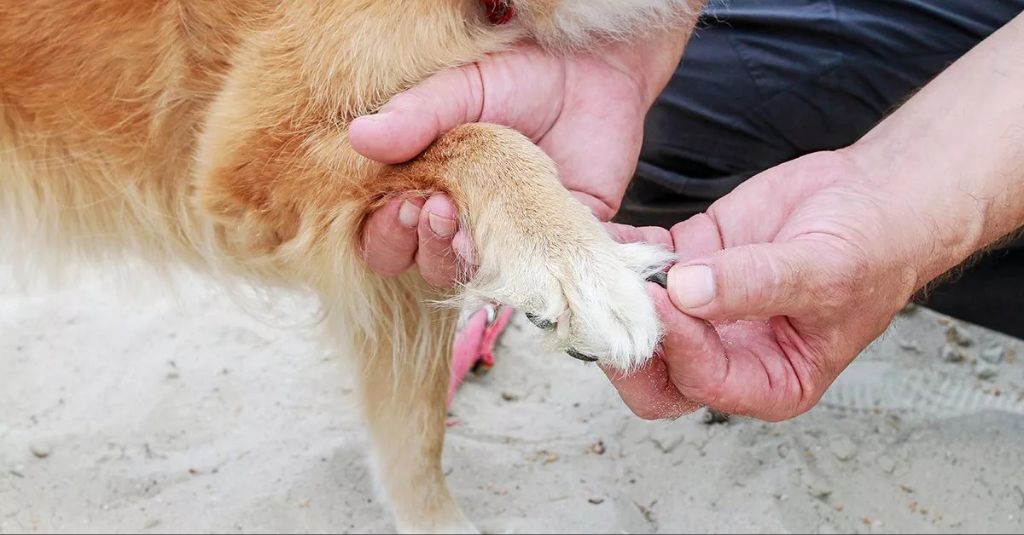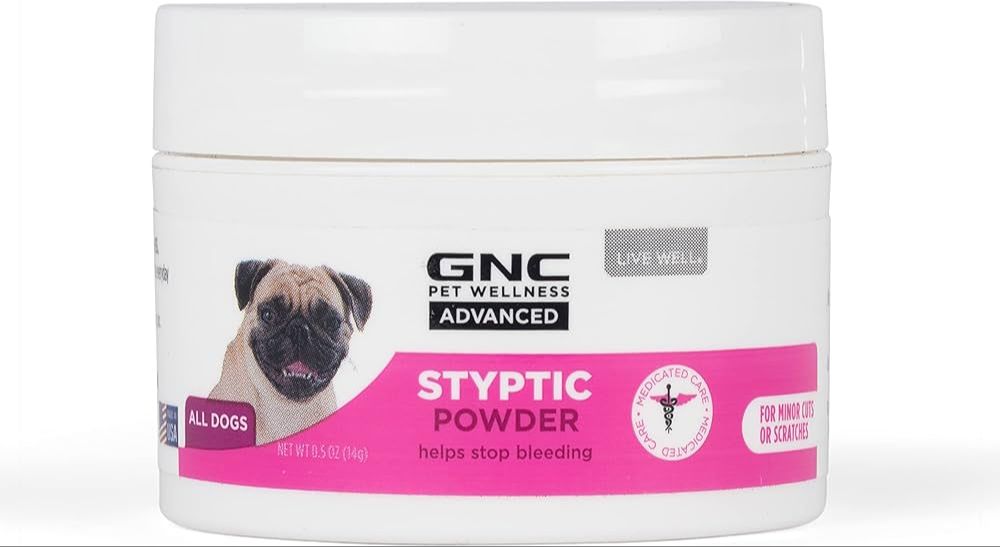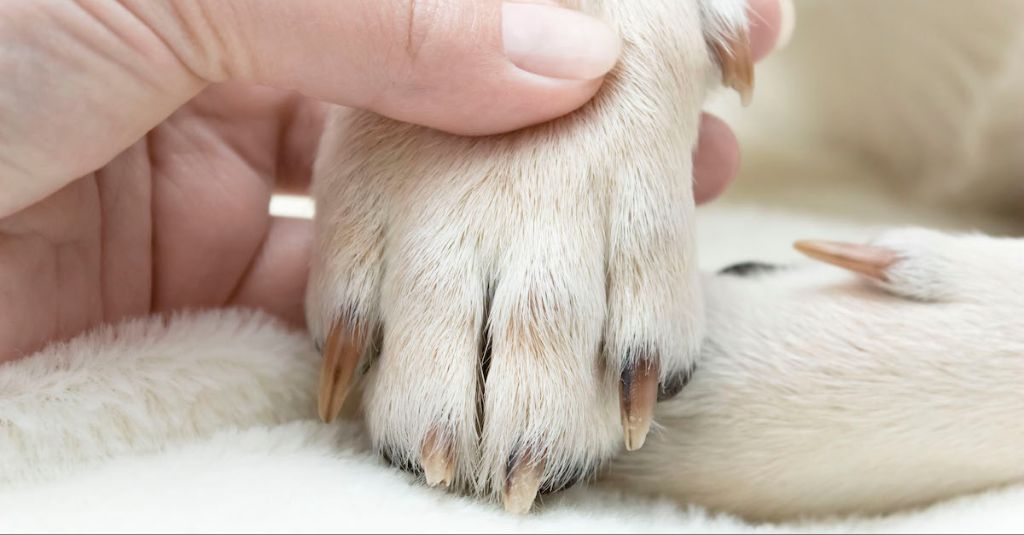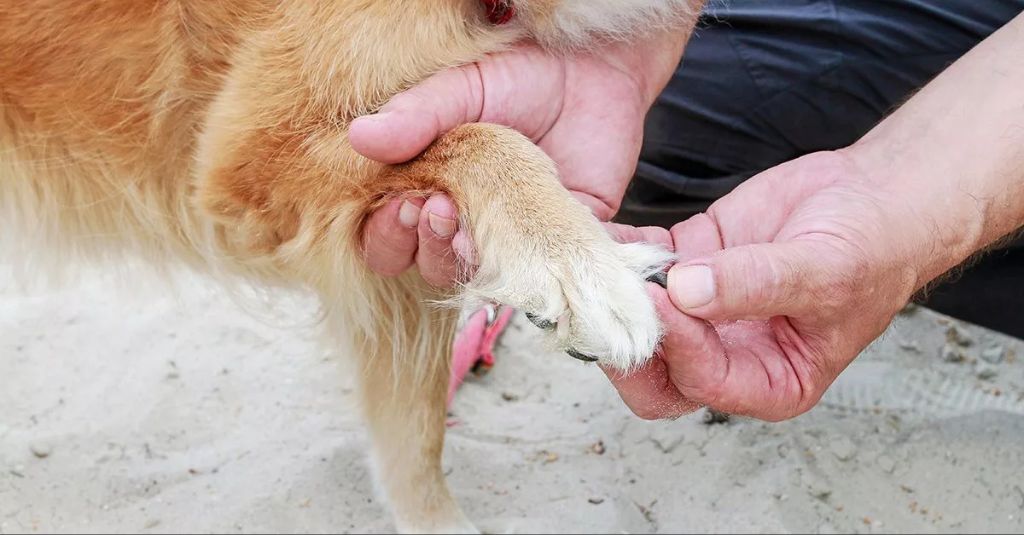Introduction
Nail bleeding in dogs is a common issue that many dog owners will experience at some point. It occurs when the nail is damaged or cut too short, causing the quick (blood vessel inside the nail) to be exposed and bleed. While it can look quite dramatic with blood dripping or spraying, minor nail bleeds are usually not an emergency. However, they can be concerning for owners and proper first aid is important.
This article provides an overview of the causes of nail bleeding in dogs, steps for stopping minor bleeds, guidance on prevention, and information on when veterinary treatment may be needed. Proper nail care is important for your dog’s comfort and health, and understanding how to manage occasional nail bleeds is useful knowledge for any dog owner.
Anatomy of Dog Nails
Dog nails are composed of a protein called keratin that forms a hard external covering over the nail and nail bed underneath. The nail bed contains blood vessels, nerves, and the quick – a vein that supplies blood to the nail.
The main parts of a dog nail include:
- The nail plate – the hard external covering made of keratin.
- The quick – contains blood vessels and nerves that supply the nail.
- The nail bed – sits underneath the nail plate and contains blood vessels, nerves and the quick.
- The nail matrix – the area where new nail cells are formed and grown.
The quick extends from the nail bed and into the nail plate. It is important not to cut into the quick when trimming a dog’s nails as this will cause bleeding and pain. As you get closer to the quick, the nail becomes more pinkish in color.
Below is a diagram showing the anatomy of a dog’s nail:

Image source: https://luckytail.com/blogs/pet/dog-toenail-anatomy
Common Causes of Nail Bleeding
There are several common causes of nail bleeding in dogs:

Overgrown Nails
When a dog’s nails become overgrown, they exert pressure on the surrounding blood vessels and nerves. This constant pressure can lead to bleeding as the vessels are damaged over time. Keeping your dog’s nails trimmed to an appropriate length can help prevent this issue.
Trauma from Injuries
Direct trauma to a nail, such as getting it caught on furniture or the ground while running or playing, can cause the nail to crack or break and bleed. Blunt force trauma like a slammed door can also damage nails and lead to bleeding.
Infection
Bacterial or fungal infections around the nail bed can cause inflammation, swelling, and bleeding. Keeping the paws clean and dry can help prevent infection.
Cancer
While rare, tumors and cancerous growths on the nails or surrounding nail bed may lead to bleeding. Seek veterinary care if bleeding is persistent.
Blood Clotting Disorders
Underlying blood clotting disorders can lead to excessive bleeding from minor nail injuries. Clotting tests may be needed if simple first aid does not stop bleeding.
When to See the Vet
If your dog’s nail is bleeding profusely and does not stop after applying pressure for 5-10 minutes, it’s important to take them to the vet right away. Significant blood loss can lead to anemia and other complications. According to MedVet, you should contact your veterinarian within 12-24 hours if bleeding persists.
Additionally, if your dog seems to be in a lot of pain or distress from the nail injury, get them checked out as soon as possible. They may be prescribed pain medication to help them remain comfortable during healing. The vet can also assess the nail bed for damage and rule out infection.
Finally, if the nail was ripped out completely or your dog seems weak or lethargic from blood loss, seek emergency veterinary care immediately. These are signs that prompt veterinary attention is required.
Stopping Minor Nail Bleeds
If your dog’s nail is bleeding slightly after a trim, there are a few simple at-home steps you can take to stop it. Start by applying firm pressure directly on the nail with a clean cloth or paper towel for 2-5 minutes. This will help control the bleeding. Elevating your dog’s paw safely above the level of their heart can also slow the flow of blood and make it clot faster. Next, apply a small pinch of styptic powder or corn starch on the nail. Styptic powder contains an ingredient called ferric sulfate which helps coagulate blood (1). Baking soda can be used in a pinch as well. Hold the powder firmly on the nail for 30-60 seconds until bleeding stops. Finally, wrap your dog’s paw in a light bandage, securing the bandage around the ankle to minimize discomfort. You can find styptic powder at most major pet stores and online retailers (2). The bandage and elevation can stay on for a few hours until the bleeding fully subsides.
(1) https://wahlusa.com/expert-advice/grooming-pets/how-treat-dog-nail-bleeding-during-trimming

(2) https://splashanddashfordogs.com/blog/five-easy-ways-stop-dog-toenail-bleeding/
Preventing Nail Bleeding
There are several ways to help prevent nail bleeding in dogs:
Getting your dog’s nails trimmed regularly every few weeks can keep the quick from growing out too long, making it less likely to get nicked when you trim. Having a professional groomer or vet provide regular trims is best to avoid hitting the quick. You can find tips for trimming nails safely at home here: https://www.akc.org/expert-advice/health/how-to-trim-dog-nails/
Providing scratching posts and cardboard scratchers around the house allows your dog to naturally wear down their nails on the abrasive surfaces. Place them in areas your dog already likes to scratch.
Walking your dog regularly on sidewalks, roads, and other hard surfaces can help wear down the nails naturally.
Feeding a balanced diet with proper nutrition helps promote healthy nail growth and strength. Make sure your dog’s food provides sufficient protein, fatty acids, vitamins, and minerals.
Giving your dog plenty of mental stimulation with training, toys, and activities can prevent boredom and destructive scratching behaviors that might cause damaged nails.
Treating Underlying Causes
If your dog’s nail bleeding is chronic or recurring, treating the underlying cause is important. Some common underlying causes and their treatments include:
Trimming overgrown nails – Overgrown nails are more prone to breaking and bleeding. Regularly trimming your dog’s nails to an appropriate length can help minimize bleeding associated with long nails. Use sharp trimmers and take small cuts to avoid trauma.
Antibiotics for infection – Bacterial or fungal infections in the nail bed can lead to irritation, inflammation, and bleeding. Your vet may prescribe oral or topical antibiotics to clear up the infection (1).

Surgery for cancer – Nail bleeding can sometimes be a sign of nail bed tumors. Your vet may recommend biopsy or surgical removal of cancerous tissues to resolve the root cause (2).
Medication for blood disorders – Dogs with clotting disorders may experience chronic nail bleeding. Your vet may prescribe medications or supplements to improve blood clotting.
Getting to the root cause of recurrent bleeding through proper veterinary diagnosis and care can help prevent further issues.
Aftercare
After your dog’s nail stops bleeding, it’s important to let it fully heal before trimming again. Bleeding indicates the quick was hit or damaged, so the nail and quick need time to heal and recede before being trimmed further. A general rule of thumb is to wait at least 2-3 weeks before attempting to trim that nail again. However, each dog heals differently, so monitor the nail closely and let it fully heal before trimming.
Also monitor the nail for any signs of infection, such as redness, swelling, discharge, a foul odor, or your dog licking at the paw excessively. If you notice any of these signs, contact your veterinarian. An antibiotic may be prescribed if the nail gets infected.
It’s a good idea to follow up with your vet within a few days of the initial injury, even if it appears to be healing normally. The vet can examine the nail and ensure the quick is healing properly. They may also trim the nail to an appropriate length if needed.
With proper aftercare and monitoring, nail bleeding due to trimming can heal fully. But be patient and let the nail completely heal before attempting to trim it again. And see your vet for any concerns about infection or proper healing.
When to Be Concerned
While minor nail bleeding can often be treated at home, there are some signs that indicate a more serious injury requiring veterinary attention. These include:
- Excessive bleeding – If the bleeding seems profuse and won’t stop after 10-15 minutes of pressure, take your dog to the vet. Significant blood loss can lead to other health issues.
- Bleeding won’t stop – Persistent bleeding beyond a day, even with home treatment, could mean an underlying nail bed issue that requires medical intervention.
- Signs of pain/distress – If your dog is licking, biting or chewing at the nail, whimpering, hiding, or seems otherwise in distress, they likely need pain medication or treatment.
- Change in nail color – A nail that turns black/purple could indicate a blood clot or dying tissue requiring veterinary assessment.

It’s always better to be safe than sorry when dealing with paw injuries. Don’t hesitate to call your vet if you have any concerns about excessive bleeding, pain, or other changes following a nail injury. Addressing nail issues early can prevent complications down the road.
Conclusion
In summary, bleeding nails can be scary for dog owners but most cases can be easily managed at home. If your dog’s nail starts bleeding after trimming, apply pressure and styptic powder. For ongoing nail bleeds or chewing, see your vet to treat underlying issues like trauma, yeast, or allergies. Though alarming, minor nail bleeds often stop within 5-10 minutes with proper first aid. While prevention is ideal, be reassured that consistent at-home treatment can minimize future bleeding episodes. Key takeaways are seeing your vet for chronic nail issues, avoiding over-trimming, and addressing root causes. With vigilance and care, bleeding nails can be effectively managed for your dog’s comfort.